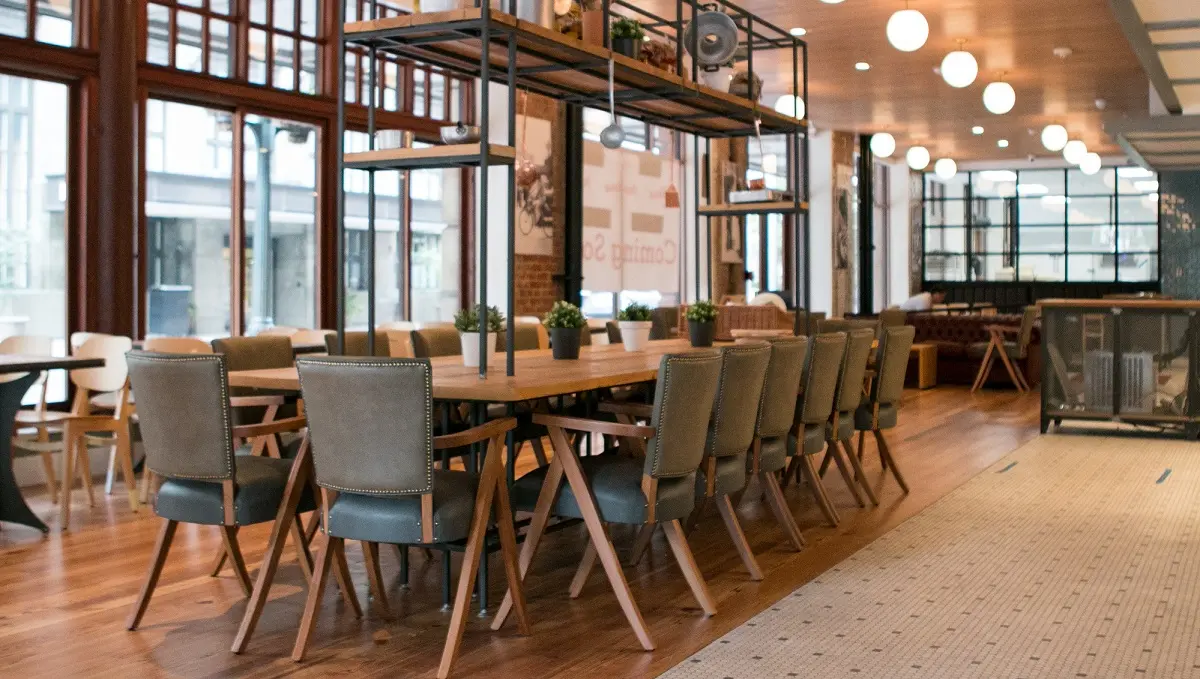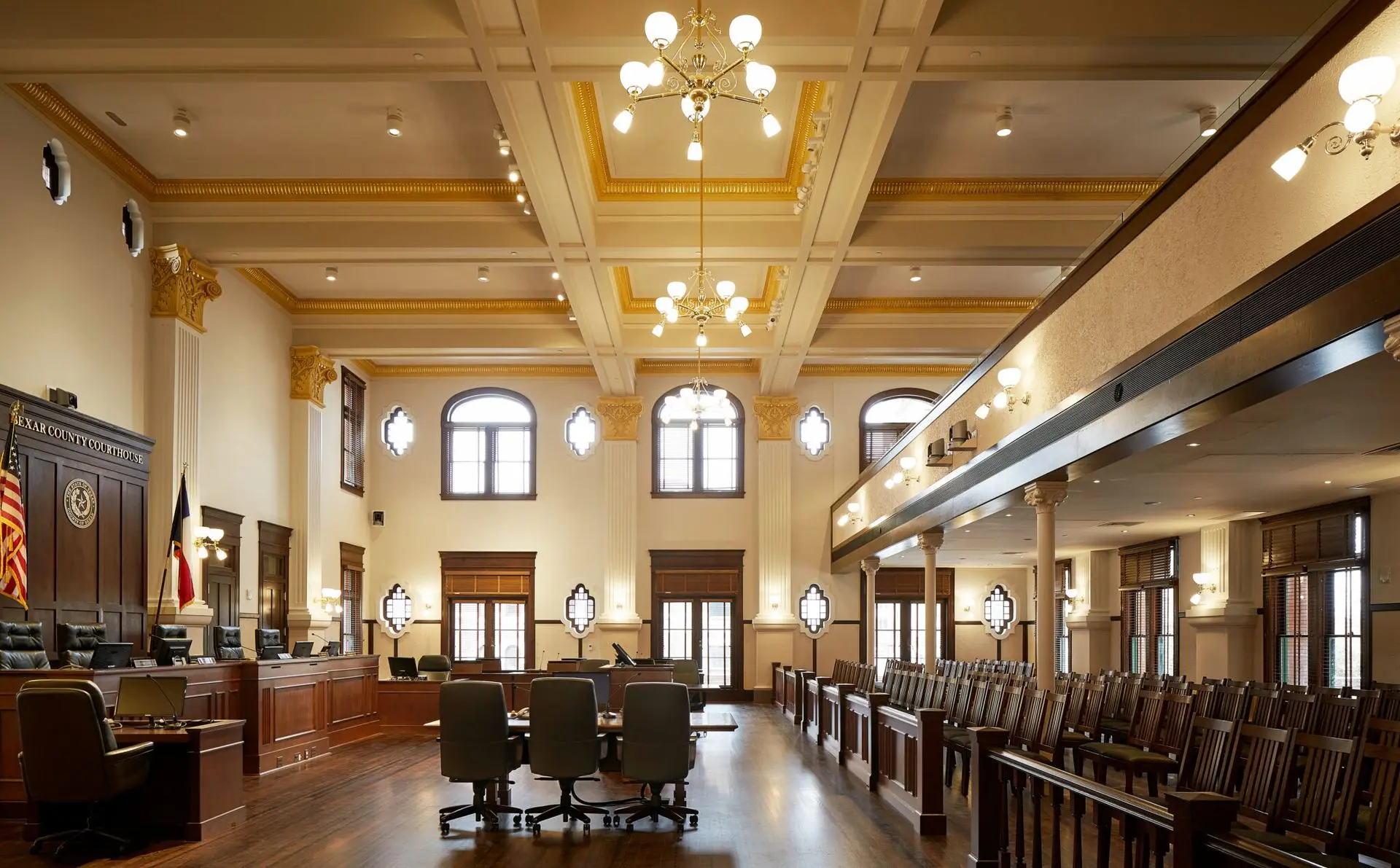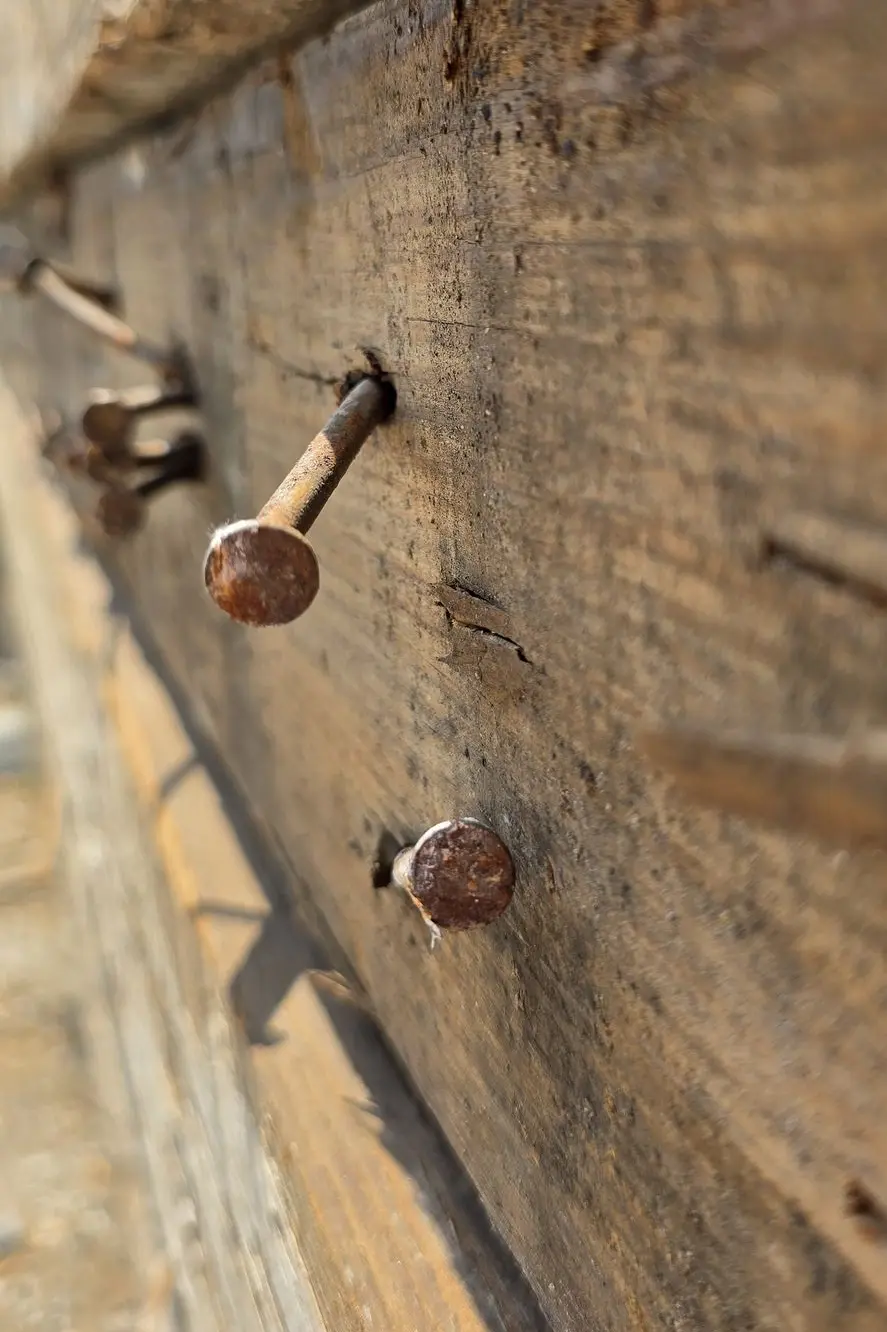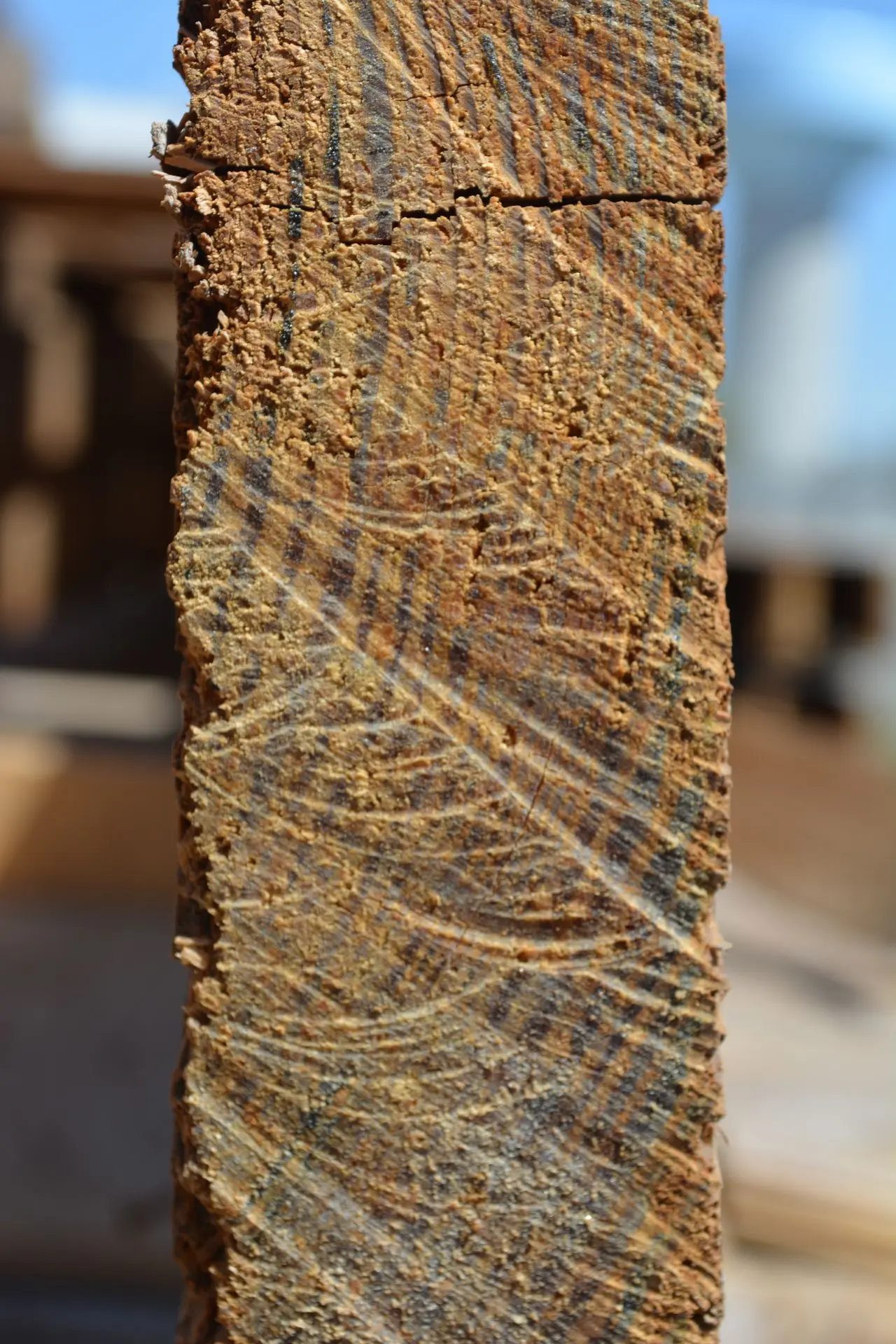From luxury residences to landmark commercial spaces, reclaimed wood flooring has become a mark of thoughtful design and responsible practice.
Beyond its striking aesthetics, reclaimed wood allows architects, designers, and builders to specify a material that tells a story, performs for generations, and supports sustainable building standards.
As a cornerstone of circular construction practices that prioritize reuse and waste reduction, research shows that designers increasingly value reclaimed wood for its aesthetic authenticity and sustainability benefits.
In this blog, we’ll look at what makes reclaimed wood unique, its key environmental benefits and how it supports frameworks like LEED.
We’ll also share two San Antonio stories – the Joske’s building and the Crockett Building – that show how reclaimed wood connects history, design, and environmental responsibility in real-world projects.


What Is Reclaimed Wood?
Reclaimed wood is lumber salvaged from existing structures – such as barns, factories, warehouses, and historic buildings – and repurposed for new projects. Instead of being discarded or sent to a landfill, this material is carefully recovered, cleaned, and often re‑milled for a second chance.
Because much of it originates from old‑growth forests, reclaimed wood tends to be denser and more durable than most newly harvested lumber. It also carries unique characteristics like weathered patinas, tight grain patterns, and historical marks. Such original details cannot be replicated in freshly milled boards.
Environmental Benefits of Reclaimed Wood
1. Reducing Deforestation
Specifying reclaimed wood directly reduces forest pressure – each reused board means one less living tree cut down. This simple act has far-reaching effects: maintaining mature ecosystems and preserving biodiversity.
Industry perspective adds weight to this choice. A report from Architizer notes that globally, architects and builders generate 16 million tonnes of wood waste each year, yet only about 15% is recycled. This opportunity gap underscores why reclaimed wood is vital, not just to prevent deforestation, but to shift the practice toward genuine circularity in construction.
2. Minimizing Waste
Construction and demolition account for a significant portion of landfill waste. Reclaimed wood diverts high-quality lumber from disposal, transforming what would have been waste into a lasting design feature. Globally, architects are specifying reclaimed wood not only for its character but also as part of a broader shift toward circular building design that prioritizes reuse and reduces waste.
3. Lowering Carbon Impact
Reclaimed wood carries with it the carbon it absorbed during its first life cycle, allowing it to serve as a natural carbon store well into its reuse. Wood is nearly half carbon by weight, making it one of the few building materials that actively keeps carbon out of the atmosphere. When incorporated into new projects, reclaimed wood extends this benefit while avoiding the emissions tied to milling and transporting newly harvested lumber.
4. Longevity Through Strength
Much reclaimed lumber comes from old-growth forests, giving it a density and durability rarely matched by new wood. Stronger boards mean fewer replacements over time, which translates to reduced material consumption and waste over a project’s life cycle.

Responsible Forestry and the Future of Sustainable Wood
While reclaimed wood reduces demand for newly harvested lumber, responsible forestry remains essential for the future of the industry.
For architects and designers, specifying wood from responsibly managed sources ensures that projects not only look exceptional but also meet evolving sustainability standards.
Reclaimed Wood and LEED: Sustainable Design
For projects pursuing sustainability recognition, the LEED rating system (Leadership in Energy and Environmental Design) is the most widely used green building certification in the world. Administered by the U.S. Green Building Council, LEED awards points across categories such as energy efficiency, indoor environmental quality, and materials.
Within this framework, reclaimed wood qualifies as recycled content in the Materials & Resources category, helping projects earn credits for reducing waste and extending the life of valuable materials.

FSC and PEFC: Certification Standards Explained
To further strengthen a project’s sustainability profile, many teams also look to product certifications:
- Forest Stewardship Council (FSC): Considered the most rigorous global standard, FSC certification ensures that wood products come from responsibly managed forests with strong environmental and social safeguards.
- Programme for the Endorsement of Forest Certification (PEFC): Recognized by LEED through an Alternative Compliance Path known as the “Legal Wood” pilot credit, PEFC provides additional sourcing flexibility while maintaining sustainability criteria.
Why Reclaimed Wood Matters for Architects and Designer
Using reclaimed wood – especially when supported by FSC or PEFC documentation – helps architects and designers:
- Earn LEED credits through recycled content and responsible sourcing
- Strengthen project sustainability credentials with trusted verification
- Deliver designs that meet both performance and environmental goals
Remember: To maximize LEED benefits, suppliers must provide proper chain-of-custody documentation for certified content.

Preserving San Antonio History Through Reclaimed Wood
The reclaimed lumber from San Antonio’s historic Joske’s building tells a story of heritage and renewal. Built in 1888, Joske’s was once celebrated as the “Biggest Store in the Biggest State,” introducing Texans to innovations like full air conditioning and the first escalators in a Texas store. When redevelopment began more than a century later, WoodCo was asked to evaluate the lumber uncovered during demolition.
What we found was remarkable: longleaf pine joists cut in the 1880s, likely harvested near Lake Charles, Louisiana. Dense, durable, and seasoned by more than a hundred years of service, this wood carried not only physical strength but also visible traces of history. Many beams bore original supplier marks – including the Beitel Lumber Company’s motto, “There’s a Reason,” painted directly onto the wood.
WoodCo carefully salvaged and processed the material, ensuring it could be reused in modern projects without losing its historic character. Within hours of adding it to our collection, the Joske’s lumber began its second life in new settings, and now, more than a century after it was first installed, Joske’s longleaf pine endures – reclaimed and milled by WoodCo for new use in San Antonio spaces where history and modern life meet:
- Local Coffee – tables and countertops crafted from the wood bring warmth and authenticity to a modern gathering place.
- La Panadería – flooring that welcomes thousands of visitors, blending the story of the past with the vibrancy of a contemporary café.
- Bexar County Courthouse – features that connect civic life today with a tangible piece of the city’s commercial legacy.
Only a handful of Joske’s boards remain in our mill, but the building’s legacy continues in the homes and public spaces where its wood has been given new life.
Now, a different chapter of San Antonio’s history is unfolding at the Crockett Building, steps from the Alamo. Built in the early 1880s and designed by Alfred Giles, the landmark is being carefully dismantled as part of the Alamo district’s restoration. Inside, WoodCo is reclaiming structural longleaf pine beams that have stood for more than 140 years.
Many of these rare, large-format members will soon be available for new projects, offering architects and designers the chance to work with material that carries both strength and provenance from one of Texas’s most historically significant sites. Quantities are limited, so please reach out to register interest.
WoodCo’s Commitment to Sustainable and Reclaimed Wood
Reclaimed flooring has long been a cornerstone of WoodCo’s work. We partner with responsibly managed forests across the U.S. and Europe to source quality lumber, and we also seek out historic structures where valuable timbers can be reclaimed.
From careful salvage to skilled milling, we ensure these materials are preserved, restored, and ready to bring both history and beauty into contemporary projects.
If you’re considering reclaimed wood for your next design, our team can help you find materials with the character, provenance, and performance your project deserves.




